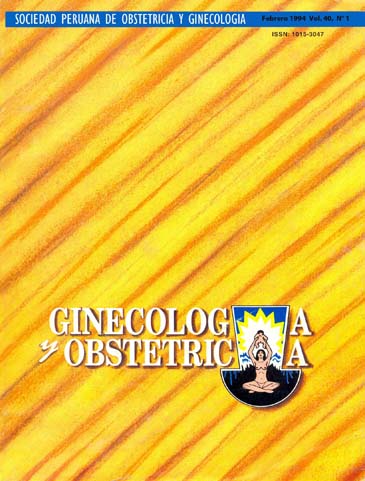Mortalidad por aborto séptico en el Hospital Nacional Cayetano Heredia. 1985 - 1992
DOI:
https://doi.org/10.31403/rpgo.v40i1656Abstract
This is a retrospective epidemiological control case type study of twenty-four deaths caused by septic abortion attended at our Hospital from 1985 through 1992. Control group consisted of 72 pregnant women who survived.. Septic abortion mortality rate was 67,3 per 100000 live newborns. Highest rate, 176,6, occurred in 1991. Mortality rate factor were 5 or more pregnancies (OR=1,7), gestational age over 16 week (OR=5,0), time from abortion maneuvers over 5 days (OR=1,7), septic shock (OR=8,5), anemia (OR=3,4), acute renal failure (OR=17,0), uterine perforation (OR=3,4), disseminated intravascular coagulation (OR=60,0), pelvic thrombophlebitis (OR = 10,2), multisystemic failure (OR=6,5) and lung shock (OR = 6,5). Significant symptoms were yellowish foul odor discharge, jaundice, petechiae, disnea and muscular pain. Main medical and surgical treatment consisted in blood and plasma transfusions, cardiotonics and anticoagulation, and hysterectomy and bilateral salpingoophorectomy. Main causes of death, were septic shock, acute renal failure, multisystemic failure, disseminated intravascular coagulation and lung thromboembolism.Downloads
Download data is not yet available.
Downloads
Published
2015-07-29
How to Cite
Castro, R., & Maradiegue, E. (2015). Mortalidad por aborto séptico en el Hospital Nacional Cayetano Heredia. 1985 - 1992. The Peruvian Journal of Gynecology and Obstetrics, 40(1), 55–59. https://doi.org/10.31403/rpgo.v40i1656
Issue
Section
Artículos Originales
















